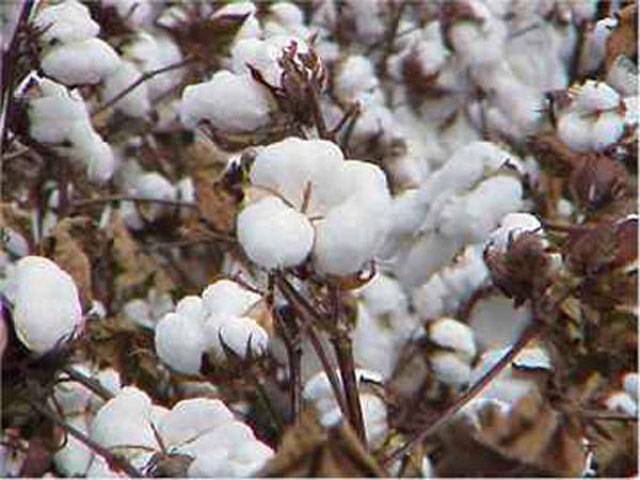LAHORE - It is feared that Pakistan will miss the revised cotton production target for year 2016-17 by more than two million bales.
Official sources said that 30 per cent reduction in sowing area of Punjab would be the main hurdle in likely non-achievement of the production target. The province shares more than 70 per cent of the country’s major crop area.
The government had set the cotton production and sowing targets for the current Kharif season at around 14 million bales and 7.7 million acres respectively for all the provinces of Punjab, Sindh, Khyber Pakhtunkhwa and Balochistan. But in recent meeting of the Cotton Crop Assessment Committee (CCAC), the production targets were revised and slashed by around 20 percent, from 14 million bales to 11.27 million bales for the current season of 2016-17.
However, the officials of Punjab Agriculture Department, who talked with The Nation on the condition of anonymity, feared that even the revised targets could be missed despite the fact that the health of cotton crop was better this season as compared to previous year. The reason, they described, was reduction in area of cotton sowing in Punjab.
“The growers in Sindh sowed more cotton, about two per cent, but Punjab faced a major blow as the area of sowing in major cotton belt was reduced by around 30 per cent,” they said.
According to officials, the cotton was sowed on around 4.5 million acres in Punjab as against the expectation of six million acres.
Cotton was sown on around 5.5 million acres last year with production estimate of 10 million bales. But, it witnessed a worst blow in country’s history with four million bales behind the estimate. Punjab merely produced around six million bales in last Kharif season. Last year, the country missed the overall crop production target by around 30 percent and it remained around 10 million bales, which according to Finance Minister Ishaq Dar caused 0.5 percent decrease in GDP growth. Abnormalities in weather like heavy rains from June to Oct-2015 in cotton belt areas of Multan, Khanewal, Vehari etc were officially blamed for loss in cotton production in season 2015-16. But the experts say pests attack and diseases and poor seed quality were the main reasons for decline in cotton output. They say the government baldy failed to introduce good seeds and control sale of fake pesticides in the province. The agricultural sector witnessed negative growth at -0.19pc against a projection of 3.9pc in last financial year.
Officials said at the start of the season, Punjab had expected to produce 9.5 million cotton bales, Sindh 4.5 million, Balochistan 0.12 million and Khyber Pakhtunkhwa had expected to share production of 0.0015 million cotton bales. However, now the estimates have been slashed to only 11.27 million bales. Officials said sugarcane and rice crops overtook the cotton rich areas of Punjab, including Khanewal, Vehari, Rahimyar Khan, Rajanpure, Muzaffargar and Lodhra. The cotton sowing, they said, also declined due to lower prices of cotton nationally and internationally during the last three years, which too discouraged growers, who opted to cultivate maize, sugarcane and rice crops in some districts of Punjab due to their better market returns.
5 new wheat varieties
introduced
APP from Faisalabad: Ayub Agricultural Research Institute (AARI) Faisalabad has developed 5 new wheat varieties which could be sown in irrigated and arid areas this year.
During a meeting here Tuesday, Director Wheat Research Department AARI, Dr Makhdoom Hussain said the AARI from its inception had so far introduced 80 varieties of wheat including 5 wheat varieties developed during 2016. Among new varieties include Gold-2016, Johar-2016, Ujala-2016, Ehsan-2016 and Fateh Jhang-2016, he said and added that Gold, Johar and Ujala were for irrigated areas whereas Ehsan and Fateh Jhang were for arid lands.
He said that Wheat Research Department AARI had planned to conduct 155 wheat research experiments during next year and for this purpose, necessary material has been provided at its experimental centers including Arid Zone Research Institute Bhakkar, Regional Agricultural Research Institute Bahawalpur, Barani Zarai Tehqiqati Adara Chakwal.






